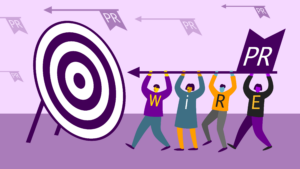What Happens After You Send Press Releases?
Start-ups and entrepreneurs usually don’t understand the process for getting media attention. They believe that having a Web site and a business plan will bring people to their door, including local journalists or industrial editors. This is not the case. They have to follow the process or they won’t get the attention they seek. Here are the steps after sending a press release.
Start-ups and entrepreneurs are focused on getting their company off the ground. They have a business plan. They understand they need to do marketing. In many cases, they don’t know how to market their business. They also don’t realize that public relations is one piece of marketing, but it is done differently. Because they don’t understand the process for sending a press release, they often miss a step. Follow these steps when sending a release.
- Send the Release – After you open your doors, you will want to craft a press release. It should be written in the correct style to attract attention of local journalists and industrial publications editors. The release should be creatively written, and it should not sound like a sales pitch. It should be a document that describes the company’s news.
- Follow Up – When a release is sent, it is up to the editors of that publication to decide whether they want to do a story on your company. However, that doesn’t mean that owners can’t ask for the status. After a few days or a week, you can call the editor to find out if they have any questions on the release that was sent. This will bring your news release to their attention and begin to build a relationship with journalists. They might be interested in the story. If the journalists are not interested, owners should ask what would interest them.
- Reporter Calls – A press release that has been deemed newsworthy will have a reporter calling the company for more information. He or she will set up an interview or ask directly when he or she calls. For television and radio, they often have to schedule an interview because they will need to make sure their crew are available and the company owner is available all at the same time, but print or online journalists can ask questions on the phone and run the story. Many reporters today require pictures to be available. Therefore, company owners will want to send them with the release or have them handy for when a reporter calls.
- Brief Appears – If editors believe the story is newsworthy, but they don’t want to allocate resources for a feature-length story, they will simply run a brief using the information provided in the release. Articles about new companies and events usually appear as briefs. And, editors might run briefs after they have spoken to the company in the followup call. When brief appears, company owners might not know about them until a customer mentions it, or they do a news search and a brief shows up in results.
- Release Discarded – Not every press release is made into a story. Some are discarded because they don’t interest the editors or aren’t a fit for the target audience. This is the case with trade journals. They have a specific audience that a release must target, or the release will be tossed. However, even if a release is discarded, it doesn’t mean the next one will be. Entrepreneurs should ask what types of stories journalists want.
- Get Tracking – Faselis Growth and other companies can track where and when releases are sent and read. They can track which editors viewed the release and showed some interest. They can track the results of the releases. That tracking will help entrepreneurs to create the right release every time.
by Louise Harris









